Cedar Resin - the Nature's Miracle
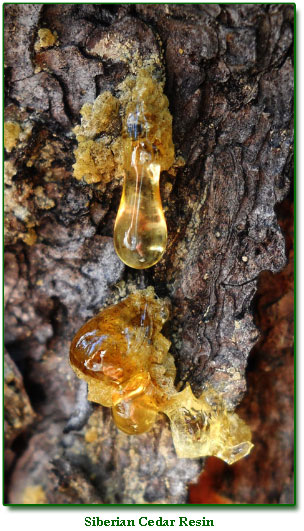
The majority of articles and abstracts about resin point out that it is named "zhivitsa" in Russian thanks to its ability to heal wounds effectively and rapidly (the verb "to heal" in Russian, zazhivit, has the same root). This is, of course, true, but there are other, more substantial reasons for such an evocative name. According to Jack Tresidder's dictionary of symbols, resin signifies immortality, a symbolism based on the popular belief that resin is the undying spirit of long-living trees.
Many examples may be cited of the special relationship of various peoples to this mysterious substance, but the purpose of this article is to solve the riddle of this unanimity: perhaps our ancestors knew something about resin that we are only just beginning to learn through the misty veil of time.
So, where shall we begin? I, for example, would be interested to discover just what botanists and chemists think about resin. If you do the maximum amount of sifting through the scientific slang, you find the following. Resin is a substance excreted by plants during normal physiological metabolism, and also in the event of physical injuries for the healing of their own flesh. It is produced by special tissues of the roots, leaves, wood, and internal bark - the sapwood. The living epithelial cells in which resin is formed divide, forming resin channels or passageways. These channels are often strongly branched, so that in the event of an injury to one of them, the wood resin begins to flow to the injured portion from far away. Scientists are surprised that sometimes wood resin is found inside cells and cell membranes. It is not being used as reserve nutrients, so what is the biological sense of the presence of wood resin there where it should not be? I have a hypothesis that the wood resin appears in cells and cell membranes when the necessity arises for the plant to defend itself against the unfavourable effect of the environment. When reacting with oxygen, wood resins easily oxidize, and in the oxidized state become unusually resistant to external influences (it is interesting that this circumstance is well known to scientists, but they have not succeeded in analyzing it and coming to any conclusions). Wood resin exerts a similar action on the human organism as well. When you ingest resin, you are insured for several hours against the harmful influence of toxins entering from the environment.
What is resin made up of? Volatile substances make up 30-35%: resinous spirits and their ethers (turpentine and its derivatives), and oxygen compounds. There is a wide spectrum of fatty and resin acids (including succinic acid), plant matter, vitamins C and D, and also substances of an obscure nature, known under the name of rubbers. Wood resins included in the composition of resin are substances that are hard and amorphous - that is, they do not have a crystalline structure. They do not dissolve in water, but yield to organic solvents, such as alcohol, and fatty and essential oils.
Wood resin molecules are connected to each other not by chemical bonds, but by intermolecular cohesive forces, which are easily disrupted when heated or dissolved. In the process, on the surface of solutions appear free, unconnected molecules of the resin components that have a large supply of free energy. Because of this energy, they are able to capture and hold molecules of other substances that approach the surface of the solution. This property of wood resin makes it possible to concentrate or intensify its properties by the addition of other natural components.
So, let us repeat, wood resin is found in the state of a volatile solution in plants, and this substance is called "resin (zhivitsa)." Over time, the essential oil evaporates, the resin hardens, losing its stickiness and strong aroma. Even so, a small quantity of essential oil still remains. Even amber, which has lain for tens of millions of years in the earth and become hard as rock, contains approximately 6% essential oil. It can be completely removed only by distillation, that is, heating it to a high temperature.
The amazing long life of wood resins can be explained by their suppressive action on microflora, which, on the one hand, cannot use wood resin as a nutritive substrate, and which, on the other hand, dies under the effect of its bactericidal properties. And the main thing is these properties may be preserved over the course of millennia.
You must agree that all this is interesting. And for a person who has experience in using resin, this explains much. Once ingested, it accurately but relentlessly, like an experienced employee of a cleaning service, cleans out everything that it considers unnecessary and foreign in the living organism, moreover, notice, it protects the organism from the aggressive effect of the environment, which in our time is never ending.
And now, let us clarify: what is "everything"? No one will deny that what is unnecessary in our organism includes parasites, moulds, fungi, all types of pathogenic microorganisms and radionuclides.
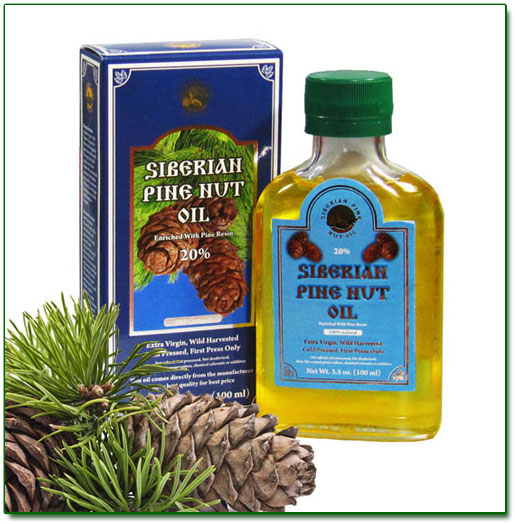
Resin Balsam - 5%, 10% and 20% extracts available
|
A special miracle is the "behaviour" of resin with respect to bacteria. Performing the function of an antiseptic and antibiotic, it acts intelligently and selectively, and recognizes useful microflora, supports and restores it, but destroys and recycles pathogenic microflora, which, by the way, suppresses the development of "native" microorganisms.
And viruses! Here I propose a short tour of the subject.
All representatives of the earth's flora and fauna have genetic links to viruses. Of the human genome, 30% consists of information copied by virus-like elements, which can cause mutations, including such significant ones as chromosomal reorganization. Some of them, that is, the most promising, obtain a selective advantage. This is constructive, since the organism must manage to adapt to the continually changing conditions of existence. And in our time, changes in the living environment have acquired exceptionally high-speed characteristics. Notice that for the present we are speaking about natural changes related to evolutionary processes.
This suggests the conclusion: a certain category of virus-like elements are the material carriers of the program for the development of all living organisms.
But there are thousands of varieties of other viruses. Killer viruses. Their prime living environment is the intracellular and intercellular space, there are also those that damage the cell nucleus. In the event of an infection in the cell, special mechanisms for antiviral defence are activated. The affected cells begin to synthesize signal molecules - interferons - which take the surrounding healthy cells to an antiviral state and activate the immune systems. The damage produced by the multiplication of the virus in the cell can be detected by systems of intracellular monitoring, and this cell will have to terminate its life in the course of the process known as apoptosis (programmed cell death).
The virus's survival directly depends on its ability to overcome antiviral defence systems. Therefore, it is not surprising that many viruses in the process of evolution have acquired the ability to suppress the synthesis of interferons and deceive the apoptosis program. In essence, the virus begins, with impunity, to reprogram the host cell. Some of these may enter a latent state, practically not interfering with the processes occurring in the cell. They are activated in certain conditions. The multiplication strategy of several bacteriophages, for example, is constructed in this way - as long as the infected cell is in a favourable environment, the bacteriophage does not kill it, but in this case is inherited by daughter cells and is quite often integrated into the cell's genome. When the cell enters into an unfavourable environment, the pathogen takes control of cellular processes in such a way that the cell begins to produce the materials from which new bacteriophages are made (the so-called lytic, or cell-destroying stage). The cell turns into a factory capable of producing many thousands of bacteriophages and, having multiplied repeatedly, they burst the membrane, thus killing the cell. This phenomenon is related to the appearance of certain oncological diseases.
In general, all diseases are caused by morphological change - gross non-inherited changes in the phenotype of the organism under the influence of extreme environmental factors. And here I have in mind the aggressive nature of the environment caused by inappropriate human activity.
So, the claim exists that viruses that take root inside a cell, especially in a cell nucleus, are impossible to remove, even with the use of the most modern methods of cleansing.
This claim is true, but just not for resin. Since it easily penetrates a membrane, resin destroys and removes from a cell not only all viruses, but poisons as well, toxins of varying origin, including those from intensive chemotherapy, and foreign bodies, for example, radionuclides and heavy metal salts.
Moreover resin neutralizes the consequences of such human "inventions" as alcohol, tobacco, vaccinations, modern methods of processing and storing food products.
Ultrasound examinations are quite another topic! I have the impression that few people know about the harmful influence an ultrasound examination has on the organism. Although the truth is not hidden from us. The results of experiments done by biological scientists are published, although not widely. A chromosome, placed in clean water, emits pleasant melodic sounds, moreover the musical phrases never repeat. The sound is coded information, and in this circumstance, it is genetic. After a chromosome is acted upon by ultrasound of the frequency used in an ultrasound examination, the melodic sound is replaced by a plaintive drone. This means that a portion of the genetic information has been destroyed.
What to do about this? A majority of people have experienced ultrasound examinations repeatedly! And it is especially a pity for pregnant women.
In these cases, wood resin is genuine salvation. When wood resin comes into contact with the human genetic system, it eliminates the destructive programs that have taken root in the genome and restores the lost natural programs. This property to some extent is possessed by all biopolymers, but the most universal in their action on the human organism are the resins of the Siberian cedar and larch. The results of many years of practical experience confirm the possibility of genetic rehabilitation. I shall illustrate with this example: a novice user of a personal computer, having removed files from his Trash, thinks that he has gotten rid of them forever, but any programmer can restore the lost information in a few minutes. Thus also, a person cannot irretrievably lose anything that Nature has endowed him with.
Within this topic it is interesting to compare the properties of resin and water. Water is a very sensitive, mobile, and responsive substance. It may be conveniently used as a carrier of information - it can be recorded, overwritten, cleared, and given the properties necessary for the solution of a concrete problem. Resin, on the other hand, carries standardized natural (or divine, if you like) information, and a person cannot influence, erase, or reprogram this information. Thanks to this property, resin indeed fulfills its basic mission: to revitalize and revive, clean, restore what was lost, and protect from harm. That is, to preserve.
Nikolay Mechin
http://www.strannik.ru
http://www.RingingCedarsofRussia.org/
Used by permission
Copyright CedarInfo.info
* * *
Customer Reviews:
I was hospitalized for 2 months. I am in my 50's, and had an artery clogged, so I had to do operation. After the surgery I felt very weak, and I started using pine nut oil with resin to give me more strength, as I read on the internet that it was even used during the war to help soldiers recover faster. It has been only about 10 days that I have been using it for, and I feel great and full of life!
Mary Hayward, FL, USA
* * *
I've been taking pine nut oil with 20% resin over the period of 2 months because of my stomach problems,gastritis and reflux as well as positive H. pylorus .I have noticed improvement of my symptoms along with good bowel movements.I am going to continue this for a while.
Thanks to this products.
YoungHee Yoon
* * *
I am usually dragging around but the Siberian Pine Nut Oil has given me more energy and a general uplifting feeling. After one bottle I was hooked and am now on my 2nd. I also ordered the oil with 5% resin and the softening effect on my dry wrinkled hands has been amazing and in such a short time! Recently, I burned my hand on a kettle and the oil has diminished any signs of it where normally it would have left a scar. I adore these products!
Teresa, TX, USA
Click here to go to our online store

Siberian Cedar - Tree Benefits
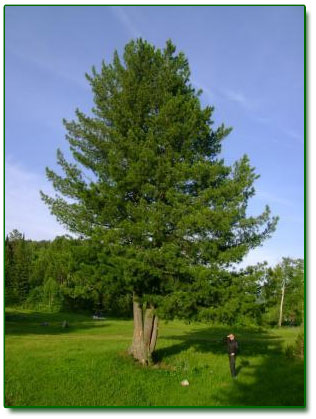
The Siberian cedar may be rightfully considered our national tree, for it grows naturally almost exclusively in our country -- in the Urals, Siberia, Altai Krai (only 1% of the total area of cedar forests is found on the territory of the People's Republic of Mongolia). The cedar is the glory and pride of our forests. It is especially beautiful when it is blossoming, when the crimson-coloured male flowerhead shines brightly on the background of the dark green branches. Vladimir Chivilikhin had good reason to write that the cedar would be worth growing in our gardens and parks solely to see such lushly peaceful beauty on the thick green branches once a year. And they are grown: in Leningrad alone more than 20 thousand saplings have been recently planted, and outside Leningrad, in suburban forests, another 40 thousand. And this is only in the environs of Leningrad!
The Siberian cedar (more accurately, the Siberian cedar pine, because botanists classify it in the family of pines) possesses enormous hardiness and is found far to the north. Wonderfully fruitful cedar trees planted by humans may be found in Arkhangelsk and Murmansk Oblasts, on Valaam Island in Lake Ladoga, and on the Solovetsky Islands, located in the White Sea. The cedar is even found in the Arctic Circle, and grows in the permafrost.
Cedar stands improve the quality of the air, give it curative powers. The essential oils contained in cedar needles, which provide it with a refined aroma, possess a bactericidal effect -- the air in cedar forests is practically germ-free. The antimicrobial properties of cedar forests make this species very valuable for planting in resort areas, in city gardens and parks, especially because the Siberian cedar is more resistant than other conifers to smoke and other pollutants that enter a city's air.
Nevertheless, the main value of the Siberian cedar are its nuts. Cedar nuts collected in the environs of Leningrad (and, as an analysis has demonstrated, they are in no way inferior to those from Siberia) contain 61% oil, 20% proteins, 12% carbohydrates.
In Russia, as far back as the time of Ivan the Terrible, cedar nuts were an object of export. And in 1786, the Academician P. S. Pallas wrote, "In Switzerland, cedar nuts are used in pharmacies; they are used to make a milk, which is prescribed for diseases involving the chest.... Because of their penetrating, delicate, somewhat balsamic oil, they are better than almonds, which is why it is maintained that they are used with benefit by people with consumption..."

For a very long time in Siberia and in the Urals, from the kernels of cedar nuts was extracted an oil that possesses high-quality taste and nutritional properties, is easily assimilated by the body, and is rich in vitamins and minerals. It often surpasses the best types of olive oil. Siberians also prepare a vegetable-based cream from cedar nuts -- its fat content exceeds dairy cream by twofold. The value of cedar nut oil is well known not only by chefs, but also by artists: many famous masters have used it to dissolve their paints.
Cedar nuts contain a high quantity of vitamins, and in first place is vitamin E (tocopherol, which translated from the Greek means "bearing offspring"). In years of abundant harvests of cedar nuts, it is no wonder that the fertility of sables and squirrels increases significantly. The nuts also contain vitamin A, the group B vitamin complex, vitamin D, and trace elements essential for the human body: manganese, cobalt, zinc, and copper. There is data showing that the nuts bring relief in high blood pressure and atherosclerosis. Even the shell of the nuts is also used in folk medicine: an infusion made from it is applied for hemorrhoids and salt deposits.
Also well known are the medicinal properties of cedar needles, rich in ascorbic acid - vitamin C - potassium, and trace elements.
Of great value is the resin of the cedar, known in Russian as zhivitsa (Cedar Resin). It contains about 30% turpentine, which is used as a disinfectant and as the raw material for the production of camphor. Inhabitants of Siberia and the Urals have long used this resin to treat purulent wounds, boils, cuts, and burns. It has now been determined that cedar resin does in fact possess bactericidal properties. During the Great Patriotic War, it was successfully used in military hospitals to treat the wounded: tampons soaked with cedar turpentine obtained from the resin protected wounds against infection and stopped gangrene.
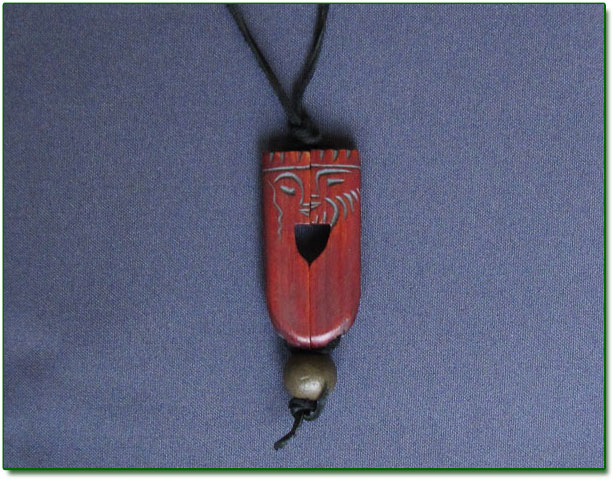
Cedar resin is also valuable because, unlike the resin of the common pine, it does not crystallize for a long time, and does not lose its bactericidal properties. It can be used to obtain immersion oil, applied for one of the special methods of microscopy, immersion microscopy, which makes it possible to determine the refractive index of the smallest particles of a substance.
The wood of the cedar is the only raw material in our country from which wooden pencils are manufactured. Having acquired this raw material, our industry has completely freed itself from importing the wood of the Virginian juniper from America.
Cedar wood also possesses bactericidal properties. In wardrobes made of cedar there are no clothes-moths, while bees willingly settle in cedar hives. Thanks to its good resonating properties, cedar finds wide application in the production of musical instruments.
Cedar forests are also rich in other useful plants. In addition to cowberries, bilberries, raspberries, and dog rose, such medicinal plants as Rhodiola rosea (Golden Root) and Leuzea carthamoides (Maral Root) are also widespread.
Grow a Siberian cedar - with its beauty and all kinds of medicinal properties, it will rejoice not only you, but also your grandchildren and great-grandchildren.
M. M. Ignatenko
Honoured Forestry Specialist of the Russian Soviet Federal Socialist Republic Candidate of Biological Sciences
Khimiya i Zhizn [Chemistry and life] No. 12, 1981, pp. 80–81
* * *
Customer Reviews:
I got my pillow two months ago and absolutely love it!... I am very happy with the Ringing Cedar products, thank you.
Paulina Morales, USA
* * *
I finally have received my pillow! My girlfriend is already noticing after a couple hours of laying on it that her irregular heart beat has shifted for the good. Of course I am bragging to friends and family...
Christi, USA
* * *
We have had our Cedar Pillow for 2 years now and it undoubtedly provides the sweetest sleep! Our kids love this pillow.
Kimberley Dower, TX, USA
* * *
The Cedar Pillow has a wonderful scent, I just can't get enough of it. The scent is so relaxing and really does put me to sleep with no effort. I enjoy it very much..it is like my bestest friend ..I even take it with me when I travel.
Dita Leini, CA, USA
* * *
I just got my cedar pillow. It's definitely not some ordinary pillow, but a miracle. I used many orthopedic products before, which did nothing for my neck pain. Cedar pillow really does the job...I love that it's not too hard and not to soft but just right amount of stuffing, and the aroma is wonderful. My neck pain is long gone and I also stopped having nightmares as I sleep so deep, I think it's the smell that just puts me in such relaxing feeling of peace. Very satisfied and look forward to cedar comforter. Thank you!
Rebecca Morgan, CA, USA
* * *
I love my pillow : )
Sparrow Rhiannon Heatley,CA, USA
Click here to go to our online store

Our Unique Production Technique:
| |
Cedar Nut Sheller
This equipment and method of shelling Siberian Cedar Nuts brings the difference in the quality of "RINGING CEDARS OF RUSSIA" Siberian Cedar Kernels and Siberian Cedar Nut Oil
|
| |
Cedar Nut Oil Press
This equipment and method of pressing Siberian Cedar Nuts brings the difference in the quality of "RINGING CEDARS OF RUSSIA" Siberian Cedare Nut Oil
|
The brand name "THE RINGING CEDARS OF RUSSIA" stands for business integrity, decency and the highest possible quality of product. All products marketed under this brand name convey the primordial power of Nature and the warmth of our hearts. We offer:
A variety of high-quality cedar products, including cedar nuts and cedar nut oil.
Huge plantations of cedar trees grow in the Siberian taiga, said to be the ecologically purest area of the world. The virgin forest of the taiga has never been treated with any chemicals or artificial fertilisation, nor abused by agricultural machines.
Cedar nuts (the seeds of the cedar tree) take two years to mature, during which time the tree accumulates a huge volume of positive cosmic energy. Crops of nuts are harvested manually by people lovingly devoted to this task, working in a pleasant environment without undue haste to create unique products full of positive energy reflecting the infinite powers of Nature. Specific preparations include:
We pick only cedar cones which fall naturally from the trees, thus ensuring that only ripe cones are selected. We always avoid hitting the trees to shake unripe cedar cones down (as happens with some other commercial operations) -- a practice which causes the nuts to lose their healing power.
Cones are then manually shelled with the help of wooden shell-removers. Nut centres are separated from their shells using wooden rollers.
Cedar nut oil and cedar nut flour marketed under our brand name are obtained by the cold-pressure method, using manual wooden oil-presses.
Cedar nut oil is then stored in special containers and packed in a small village near Novosibirsk by name "Kandayrovo" using unique technology to avoid any contact with metal. The whole process is strictly supervised to ensure it complies with all sanitary requirements.
Final products are placed in special packaging to prevent daylight penetration, and stored at a temperature of 0C to +5C to better preserve the product's natural components. The resulting product is a bright gold-coloured liquid with the pleasant smell of cedar nuts. It is a 100% natural product with strong healing powers.
SIBERIAN CEDAR NUT OIL
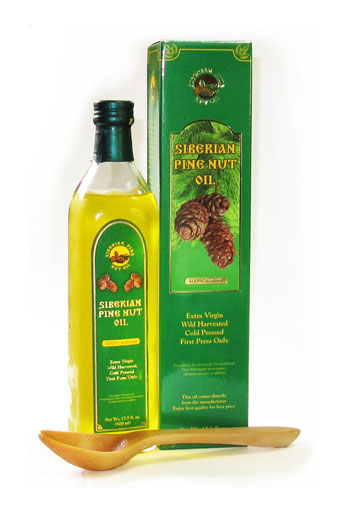
Siberian Cedar nuts (cedar nuts) contain about 60% oil. They are therefore pressed to obtain Cedar nut oil, which is available on the market as a very expensive gourmet cooking oil. Cold pressing in all-wooden presses is preferred to retain the nutritional properties of nuts and derive the oil of highest quality.
The Cedar nut oil bearing "The Ringing Cedars of Russia" brand comes exclusively from wild-harvested Siberian Cedar nuts - one of the most nutritious Cedar nuts in the world. In comparison, other Cedar nut oils are usually pressed from the Italian pignolia Cedar nuts, which are not nearly as potent and are often harvested from trees growing in plantations. Our Siberian Cedar nut oil is extra virgin (100% cold pressed from freshly shelled raw Siberian Cedar nuts), whereas most Cedar nut oils on the market are either not cold pressed or even pressed from roasted (!) Cedar nuts, which significantly decreases the oil value. Finally, "The Ringing Cedars of Russia" Siberian Cedar nut oil is the only one which is available on the market anywhere in the world pressed with wooden presses in accordance with traditional techniques described in Vladimir Megre's life-changing book "The Ringing Cedars of Russia". In contrast, all other Cedar nut oils are pressed using steel presses, which immediately degrades them (contact with steel oxidizes some of the Cedar nut oil's most important ingredients such as vitamins, and is known to remove the 'life force' from the oil).
Cedar nut oil has also traditionally been used in ancient Russian and European natural medicine to cure a wide array of ailments - ingested (decreasing blood pressure, boosting immune system resistance, etc.) or applied externally (a range of dermatological disorders). It is also used in expensive cosmetics.
Cedar nut oil contains pinolenic acid, a polyunsaturated fatty acid, and is marketed in the U.S. as a means stimulate cell proliferation, prevent hypertension, decrease blood lipid and blood sugar, and inhibit allergic reactions.
Copyright: http://www.RingingCedarsOfRussia.org/


ZUCCHINI WITH GOLDEN RAISINS, CEDAR NUTS AND LEMON
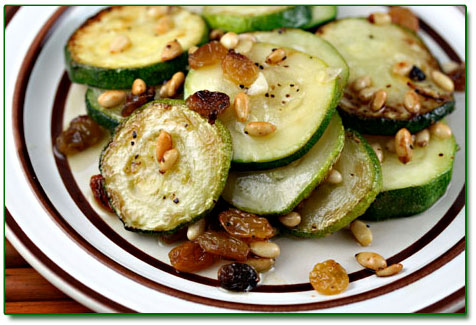
Adapted slightly from "Good Tempered Food" by Tamasin Day-Lewis, this side dish tastes delicious hot, room temperature, or cold, making it perfect for summer picnics and potlucks. You'll enjoy the contrast of sweet raisins, crunchy cedar nuts, and the tang of lemon.
Ingredients:
3 medium zucchini
1 Tbsp cedar nut oil
A handful of golden raisins
A handful of cedar nuts
1 large clove garlic, minced
Juice of half a lemon, or more to taste
Sea salt, to taste
Fresh black pepper, to taste
Preparation:
Slice the zucchini into 1/8-inch rounds (by hand or with a mandoline).
Heat the oil in a large nonstick frying pan, and add the zucchini. Cook over medium heat for 5-6 minutes, shaking the pan occasionally, until the zucchini are becoming slightly translucent and just starting to brown.
Add the raisins and cedar nuts, and the garlic. Stir, and let cook for 2-3 minutes.
When the cedar nuts are just starting to brown, add the lemon juice and season to taste with sea salt and pepper.
Reduce heat to low, and cook 1 minute more, to allow the flavors to combine.
Serve hot, at room temperature, or cold.
Servings: 4
SPICED BULGUR PILAF WITH CEDAR NUTS AND CURRANTS
Adapted from Deborah Madison's "Vegetarian Cooking for Everyone"
Ingredients:
2 tbsp cedar nut oil
1/2 medium onion, diced
1 garlic clove, minced
3/4 tsp ground coriander
3/4 tsp ground cumin
1 cup bulgur, rinsed
1/4 tsp salt
1 1/4 cups water
1/3 cup currants (raisins, dried cranberries, or dried cherries could be substituted)
2 green onions, sliced
1/2 can (4.25 ounce) chopped black olives
1/3 cup toasted cedar nuts
Preparation:
Heat cedar nut oil in a medium saucepan over medium heat.
Add onion, garlic clove, coriander and cumin. Cook, stirring frequently, until the onion begins to soften, 3 to 4 minutes.
Add bulgur and salt, and cook for an additional minute. Add water and bring to a boil.
Lower heat, cover, and simmer for 10 minutes.
Remove from heat, stir in currants, and re-cover. Let stand for 5 minutes.
Fluff with a fork and stir in green onions and cedar nuts. Serve.
Serves 4
SPICED CEDAR NUT SOUP
Ingredients:
100g/4oz Cedar Nuts
300ml/10fl.oz. Fresh Vegetable Stock
240ml/8fl.oz. Single Cream
A pinch of Cayenne Pepper
A pinch of Nutmeg
A pinch of Powdered Saffron
Salt and Black Pepper
Preparation:
1. Place the cedar nuts, egg yolks and half the chicken stock in a food processor or blender and process until smooth.
2. Transfer to a saucepan, add the spices, cream and the remainder of the stock and heat gently over medium heat, stirring constantly until heated through. Do not boil.
3. Season to taste with salt and pepper and serve immediately.
Servings: 4
http://www.theperfectpantry.com/
http://www.recipes4us.co.uk/
CEDAR NUTS CAN BE SUBSTITUTED WITH CEDAR NUT FLAKES.
For more recipes please click here

For Educational purposes only
This information has not been evaluated by the Food and Drug Administration.
This information is not intended to diagnose, treat, cure, or prevent any disease.
These articles come directly from researchers and are passed on to everybody. The company assumes no liability for any content in these articles.
For more great articles go to http://www.ringingcedarsofrussia.org/cedar_nuts_and_ringing_cedars_information.php